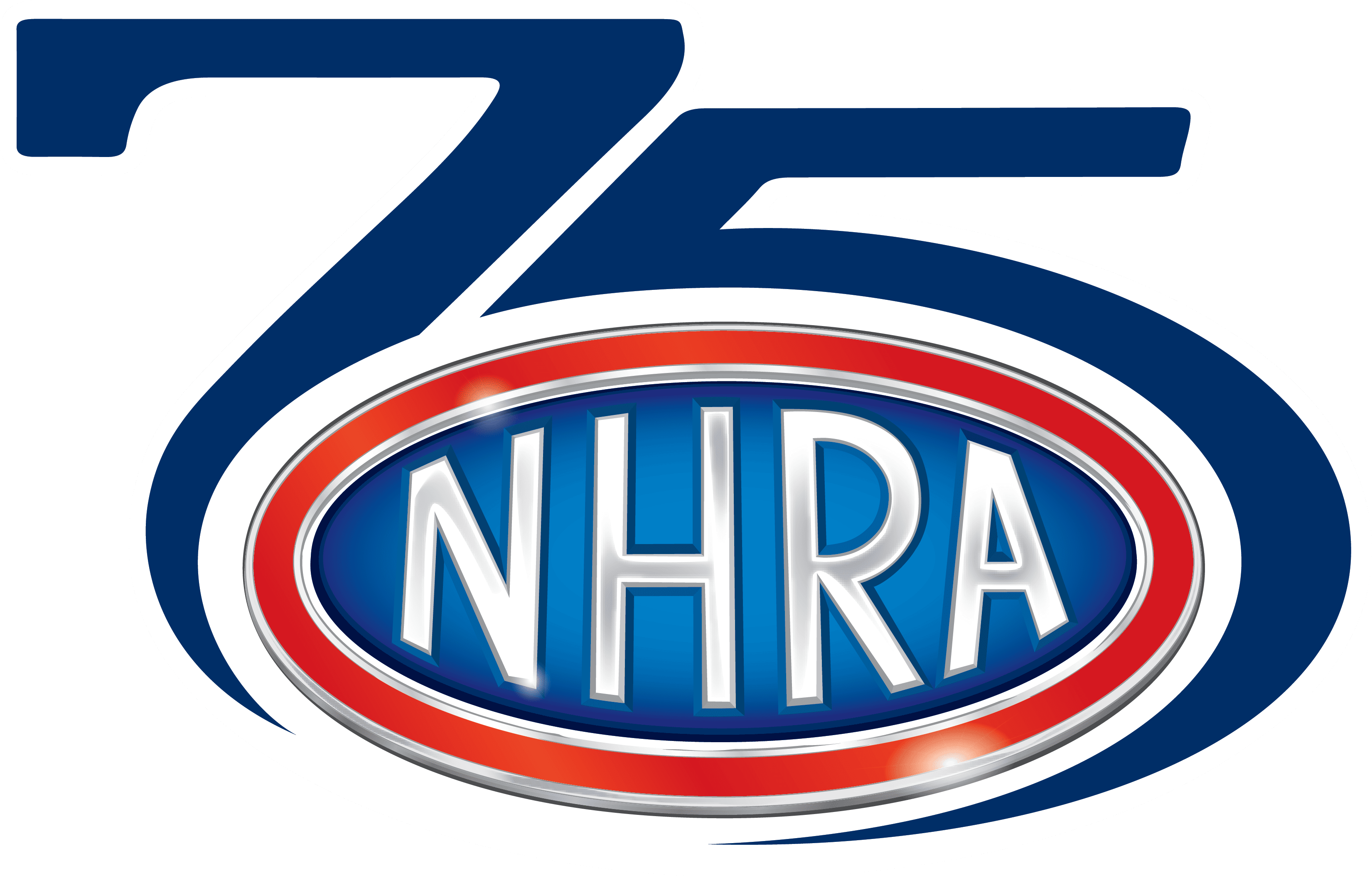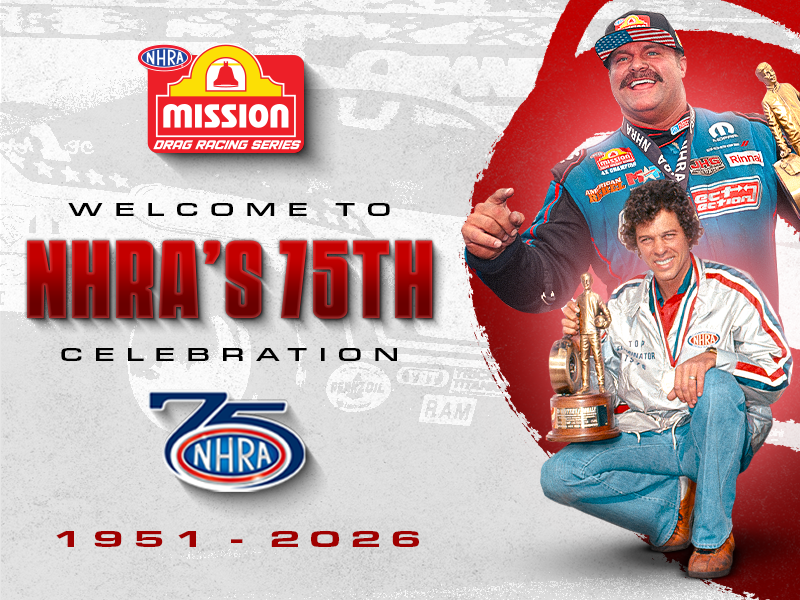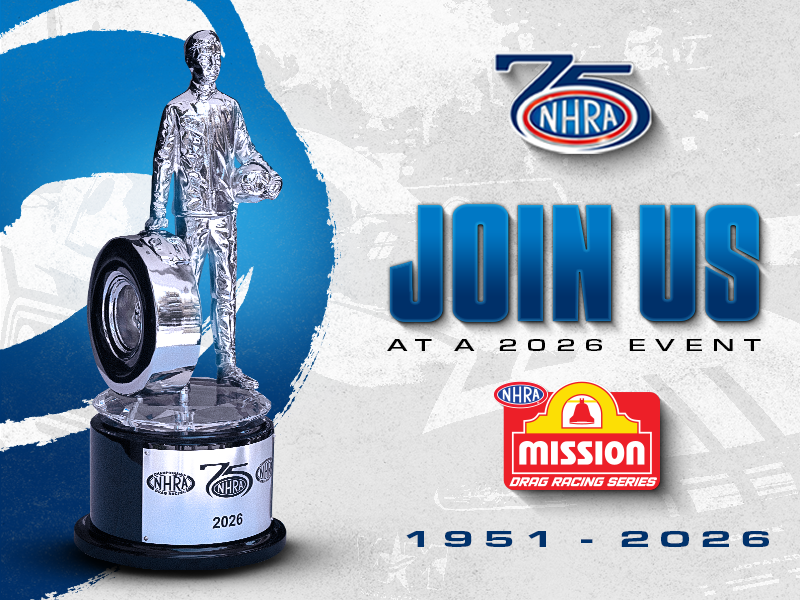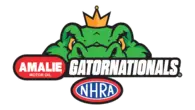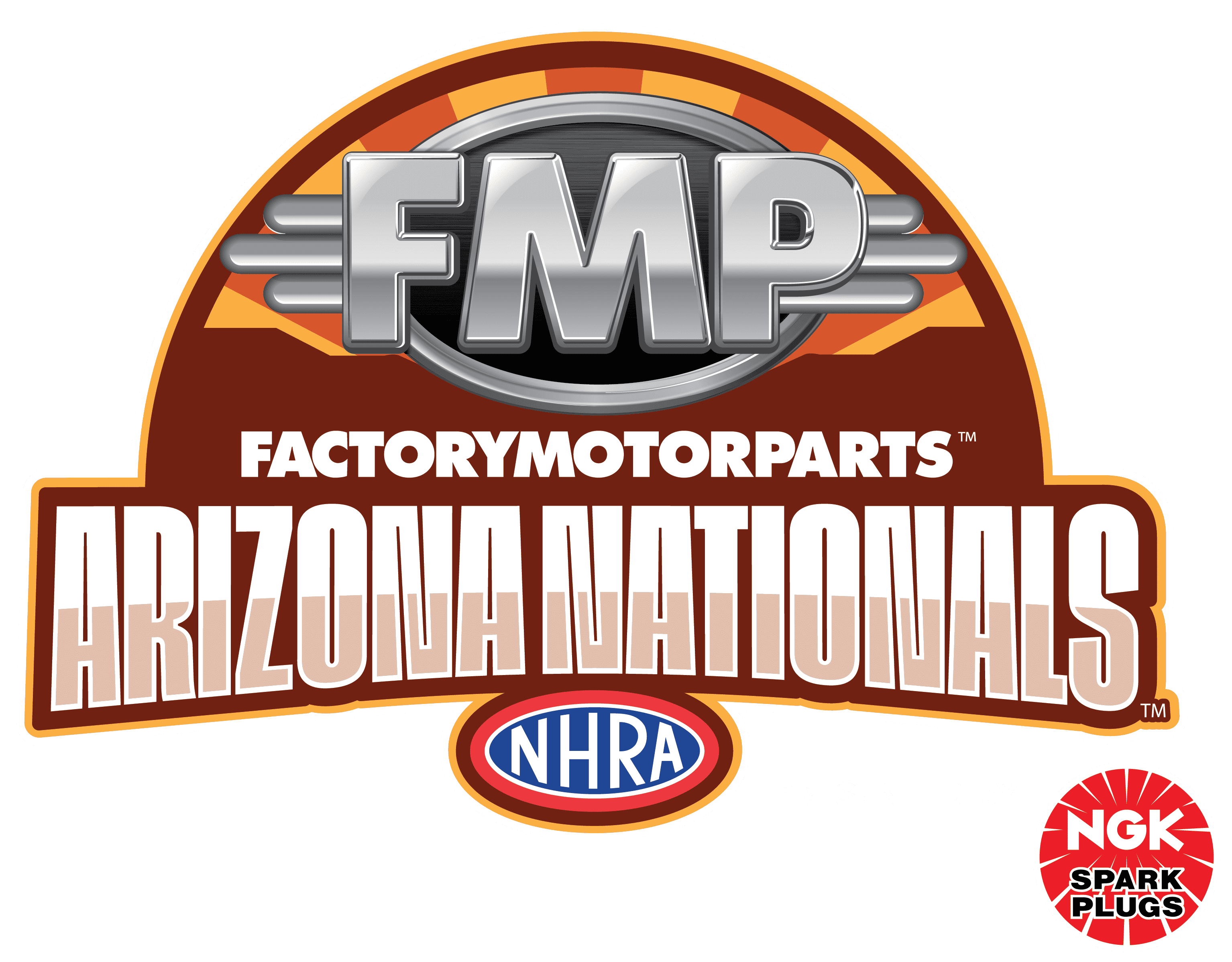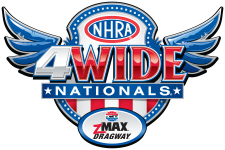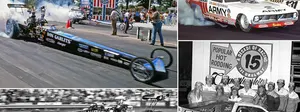The Misc. Files: From C to shining C
By popular demand, it's time to take another dip into the Misc. Files of the vast National DRAGSTER photo archives. During ND's 50 years of publication, and even in the years leading up to its launch in 1960, the staff has collected and filed hundreds of thousands of racer-specific photos in dozens of file-cabinet drawers. All of the big names have their own file folder or folders (which is why you won’t see them here; plus that would be no fun – we know what they look like), but some lesser-known drivers or drivers with only a short career are sometimes lumped in alphabetic miscellaneous folders for later sorting and/or safekeeping.
I won't say that there aren't drivers in the Misc. Files who don't deserve to have their own folder or who didn’t deserve one when they were first filed there, so I'm just calling them as I draw them from the folders.
And so, after an earlier detour from B to I and then back to A, we arrive at C. Three 2-inch-thick files were devoted to the letter C and contained lots of interesting choices, making it difficult to narrow it down to a manageable number and forcing me to leave out Funny Cars such as Eric Caskey's Raging Bull, Joe Comella's Horsepower, Larry Camenzind's Bionic Bitch, and Len Capone Jr.'s the Bear.
Enjoy your stay on the C side (and don't forget the sunscreen).
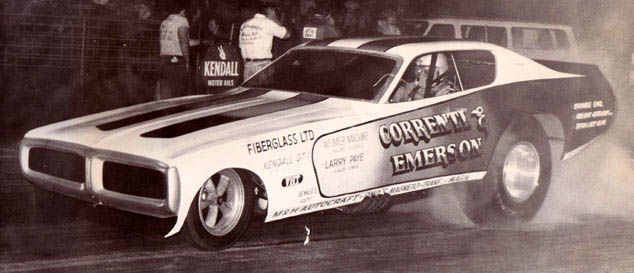 |
I was kind of surprised to find Ron Correnti in the Misc . Files because the versatile pilot, who died just over a year ago, had been around since the 1970s in Top Fuel and Funny Car (more recent fans might remember him as the driver of Larry Coogle's Sting Camaro and Bill Dunlap's Thunderbird, which was rear-ended at speed by Dave Uyehara at the 1986 Winternationals). Correnti partnered on this Dodge Charger (later known as the Chicago Charger) with longtime pal Dave Emerson, for whom he first drove in Top Gas in 1970. What's kind of cool about this car, which was an alky burner, is the lack of blower protruding through the hood, giving it more of a showroom appearance.
 |
Larry Christopherson, owner of the Arizona Wildcat Funny Car, didn’t win many races, but he did have a hand in creating a winning team. Christopherson had driven a number of Funny Cars – including one for Chevy legend Dickie Harrell -- and even a fuel altered before he put together the first Arizona Wildcat Vega Funny Car in 1973 with sponsorship from Cobre Tire. The car ran well with partner Mike Hamby tuning it, but Christopherson chose to hang up his fire gloves at the end of 1974 (when this photo was taken). The team built a new Vega for 1975, and Christopherson hired go-getter Dale Pulde to drive it. According to Pulde, he and Hamby did not initially get along, and Pulde almost quit the ride, which would have been a shame because he and Hamby later formed the potent War Eagle team that was a serious player and national event winner in the 1980s. Pulde and Hamby patched up their differences, and when Christopherson got out of racing at the end of 1975, Pulde and Hamby cobbled together parts to form their own team.
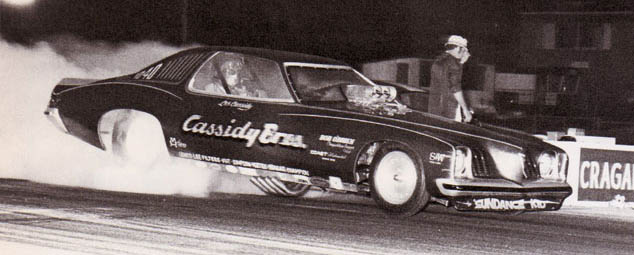 |
This photo of the late Les Cassidy has a connection to the aforementioned Pulde if for no other reason than the body choice. I've said many times that the Mickey Thompson Grand Am was one of my favorite cars, and the East Coast Cassidy brothers – Les and John – also chose the radical Grand Am body, which Pulde and former MT wrench Steve Montrelli helped build. The brothers originally campaigned a fuel altered before moving into the Funny Car ranks; their cars initially were alky burners, but they switched to nitro (and from Donovan power to a late-model Hemi) in 1977 with a Monza-bodied machine. They ran a variety of cars throughout the years with a variety of names – Sundance Kid (a natural with their last name) and Shore Connection chief among them – and won some good-sized races, including the NHRA Gold Cup Championships, and even the 1979 Division 2 NHRA Funny Car title. They also had several high-profile runner-ups, at NHRA WCS events, an IHRA Pro Am race, and the ill-fated 1974 National Challenge at York National Speedway, and were match race winners up and down the right coast. Les died Oct. 15, 2004, of congestive heart failure. He was 50.
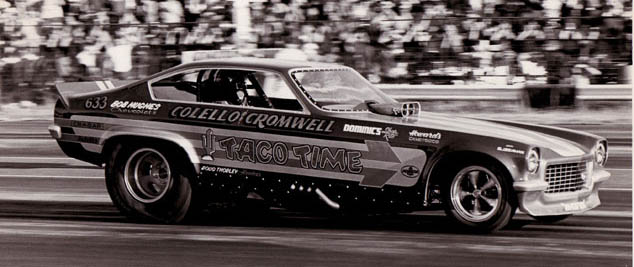 |
From the Great Northwest comes this one-shot wonder, the Colello & Cromwell Taco Time Vega, driven by Seattle's Gary Cromwell. This Chevy-powered flopper ran in 1973 and was the follow-up entry to the team's Top Fueler, which competed in 1971. Because the Taco Time chain originated in Eugene, Ore., with a single store in 1959, I'm going to go out on a limb and assume that this car was sponsored by the fast-food chain, which today has more than 350 locations from Canada to Kuwait, including more than 30 in Washington (12 alone in Seattle!), and is known for its world-famous crisp burritos.
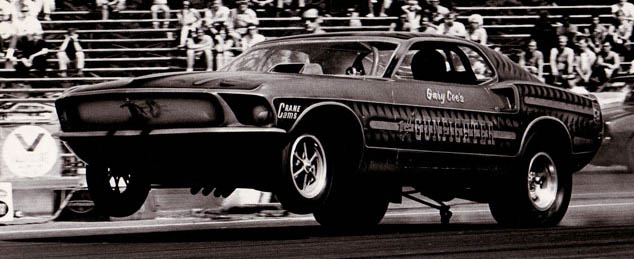 |
Staying with the Northwest, here's Gary Coe's Gunfighter Mustang from 1970. Longtime Ford proponent Coe originally competed in Comp and Alcohol Funny Car under the Gunrunner name in the early 1970s and in Pro Stock in the mid- to late 1970s (his Ford Pinto beat Warren Johnson in the first round of the first Fallnationals in Seattle in 1975). DragList says that this car was powered by an alky-burning SOHC and that it was a Maverick, but this Emil Neely shot sure looks like a Mustang. In my research, I discovered that Coe, whose family has been in the towing business for 40 years, went on to great things after leaving racing. He helped found the Towing and Recovery Association (TRAA) in 1979 and served as its president from 1989 to 1991 and now owns multiple towing companies in the Northwest. He's also an avid car collector whose cars have been featured in national magazines; learn about him here.
 |
Okay, I'm sensing a trend here. Another memorable racer from the Northwest was Joe Clement, who fielded a series of nitro floppers from 1973, when he purchased the ex-Mike Thermos and Jim Terry Sopwith Camel Barracuda, until the early 2000s, at which time he was in the Top Alcohol Funny Car ranks. A Monza body replaced the original 'Cuda in 1975, but that car was lost to a fire. Clement rebuilt with this swoopy Corvette, the chassis for which he built in his own shop by admittedly copying the work of great Northwest chassis builder Al Swindahl. I never really cared for these Steve McCracken-built Corvette bodies, but Clement's was one of the better-looking ones. Clement later drove Nelson Lengle's Sno-Town Shaker fuel coupe, jet dragsters, and fuel altereds. We lost Clement March 1, 2004, as the result of injuries sustained in an automobile accident.
 |
We've all seen dragsters with Volkswagen engines, Nissan engines, and even Subaru engines, but what about a Porsche? Long Beach, Calif.'s Doug Church fielded this cool-looking rail in the 1960s and, along with Don Garlits, Tommy Ivo, Tony Nancy, "Ohio George" Montgomery, K.S. Pittman, Ronnie Sox, Dave Strickler, and others, was part of the U.S. Drag Racing team's six-race tour to England in 1964, which was organized by British Drag Racing Association Chairman Sidney Allard and NHRA President Wally Parks. The 11-second digger is shown running at the Blackbushe Drag Fest in Hampshire Sept. 19. All of the events were run on RAF airfields.
 |
I'm not sure what the story is here or where it happened, but this was clearly an unhappy ending to a pass by Gene Canham's Chicago-based Turbine Dart exhibition entry. I couldn’t dig up a lot of info on the car other than that it ran in 1967 and was part of a Turbonique exhibition match race fleet of cars that also included Jim Costilow's Turbo Stang Mustang, Jack McClure's Sizzler Z16 Chevelle, Roy Drew's Black Widow VW Bug, and the Rauth & Venetti Pegasus Mustang. According to an article in Hot Rod magazine, the Pegasus "burned a pressurized mixture of Thermolene, nitrogen, and oxygen, the insane speed of the turbine output shaft was tamed to 7,250 rpm by an 8.3:1 reduction gearbox then fed to the quick-change rear axle and slicks."
I also found an article in Garage magazine that clarifies that these cars used "Turbonique Drag Axles, which appeared to be a center section for a quick change differential, but with a mutant spaceship tumor growing from its hinder. That tumor was, in fact, a rocket engine providing direct drive to the rear axle. When not in use the car would drive under conventional power through the front driveshaft. When the driver hit the 'panic button,' the rear-mounted rocket immediately engaged and began channeling One Freaking Thousand Thermolene-addled rocket horsepower to the rear skins. Total weight: a scant 100 pounds. It was advised that the driver keep his thumb on the switch during operation since, having no clutch or fuel metering, the only way to control acceleration was by shutting off the fuel supply." Turbonique, of course, also went on to help blow the minds of race fans by teaming with "Captain Jack" McClure on a wild rocket-powered go-kart in the 1970s.
 |
This one doesn't really belong in the C's, but it's a neat story, so I'm going with it (my column, my rules). The photo undoubtedly was filed that way because the info on the back – "Aug. '65 Springnationals, Bristol, Tenn." -- is a little thin on the details, and I couldn’t find a matching photo in any of the three National DRAGSTER issues that covered the event (held in June, by the way), but it turns out that this is probably NASCAR hero David Pearson behind the wheel of the Cotton Owens-owned mid-engined Dart, an early "Funny Car." In 1964, Bill France had outlawed the use of the Hemi engines in NASCAR competition, so the dynamic duo of Owens and Pearson – not to mention the legendary Richard Petty – went drag racing for a year and a half (Petty actually won two rounds in Comp at the 1965 Springnationals). This car was constructed by the legendary Jay Howell, a great car builder who had a hand in such legendary machines as the Little Red Wagon and L.A. Dart wheelstanders, the Ramchargers' '67 Dodge Funny Car, and the Prock & Howell F Troop AA/GS Willys.
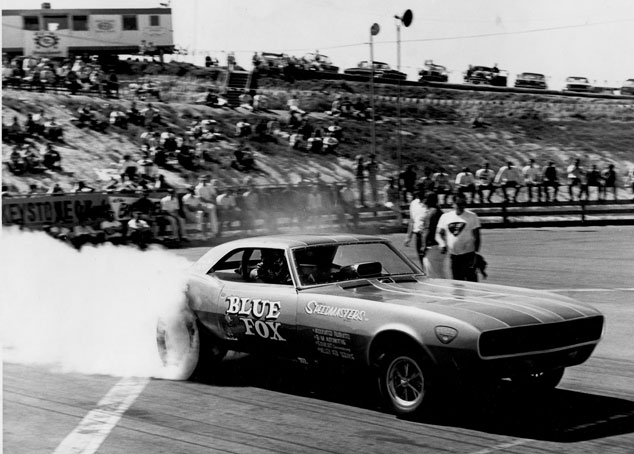 |
I featured Norm Cowdrey's wild blown Austin back in December, and here's where he went in 1967 after terrorizing San Fernando Raceway with that short-wheelbased monster. The 392-powered Blue Fox Camaro was his first Funny Car and was followed by a Beach City Corvette-like flopper the following year. The scene here is SoCal's famed Carlsbad Raceway.
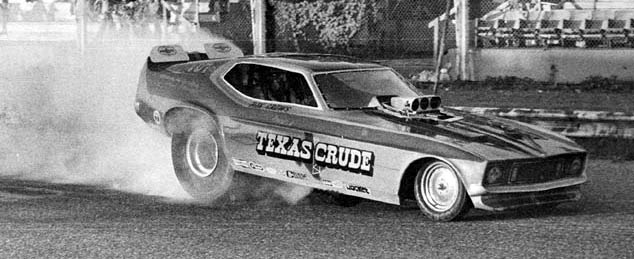 |
Here's another example of "You never know what you're going to find until you start digging." This photo intrigued me for a couple of reasons. First, I've always liked these '73-'74 Mustangs, but the caption attached to the Peters photo read, "Rik Crews, 18-year-old Funny Car pilot takes runner-up honors at Corpus Christi Dragway's 5th annual Coca-Cola Funny Car Meet." That story (and the car) reminded me of another Texas teenager's 1970s rise to fame in a Mustang Funny Car -- that, of course, being Billy Meyer. Crews' car was an alcohol burner and ran in 1977-78.
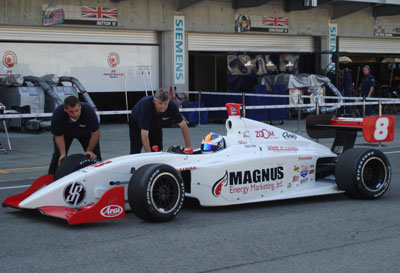 |
The story appeared to end there before I started digging around and discovered that Rik Crews is still in the go-fast business, but now he's shepherding the burgeoning race career of his son, CR III, who went from karting to the Champ Car Atlantic Championship to Indy Lights. I found an e-mail address for Rik on one of the Champ Car Web sites and, on a whim, dropped him a line. He replied almost immediately. His Mustang was owned by Ronny Ussery, and, with Ben Griffin's mentoring, he raced for two years before he ran out of funding and decided to pursue a career in aviation.
In the It's a Small World category, Holly Beadle, who was married to Blue Max hero Raymond Beadle, is the stepmother of CR's girlfriend, Jami Crotts, whose dad is former Texas dragster racer Devin Crotts. Rik is now a 50-year-old pilot for American Airlines (which means I well could have been one of his passengers on my many AA trips connecting through Dallas!). He reports that CR is now a driver in the Indy Racing League and is hoping to soon run in the Indy 500. They'll be at the Brickyard this year -- not racing but spotting, the senior Crews for Townsend Bell and CR for Paul Tracy.
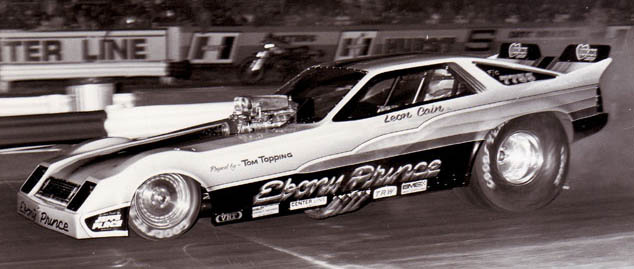 |
If Orange County Int'l Raceway was your home track, you saw this guy a lot. Leon Cain, "the Ebony Prince," was a regular at OCIR from the mid-1970s until the track closed in 1983 and raced for a few years beyond that. Cain was one of a number of black Funny Car racers – including Rodney Flournoy, Clarence "Boogaloo" Bailey, and Barry "Machine Gun" Kelly – who followed in the footsteps of trailblazer Malcolm Durham and fielded competitive and entertaining cars that could always be counted on to round out the fields at match races. Cain initially fielded a Mustang, tuned by Eddie Flournoy, but this Dodge Omni, pictured here in 1981 at OCIR, was one pretty machine.
Okay, that completes our trip through the Misc. C Files. I'll C ya later … I mean, D ya later!
